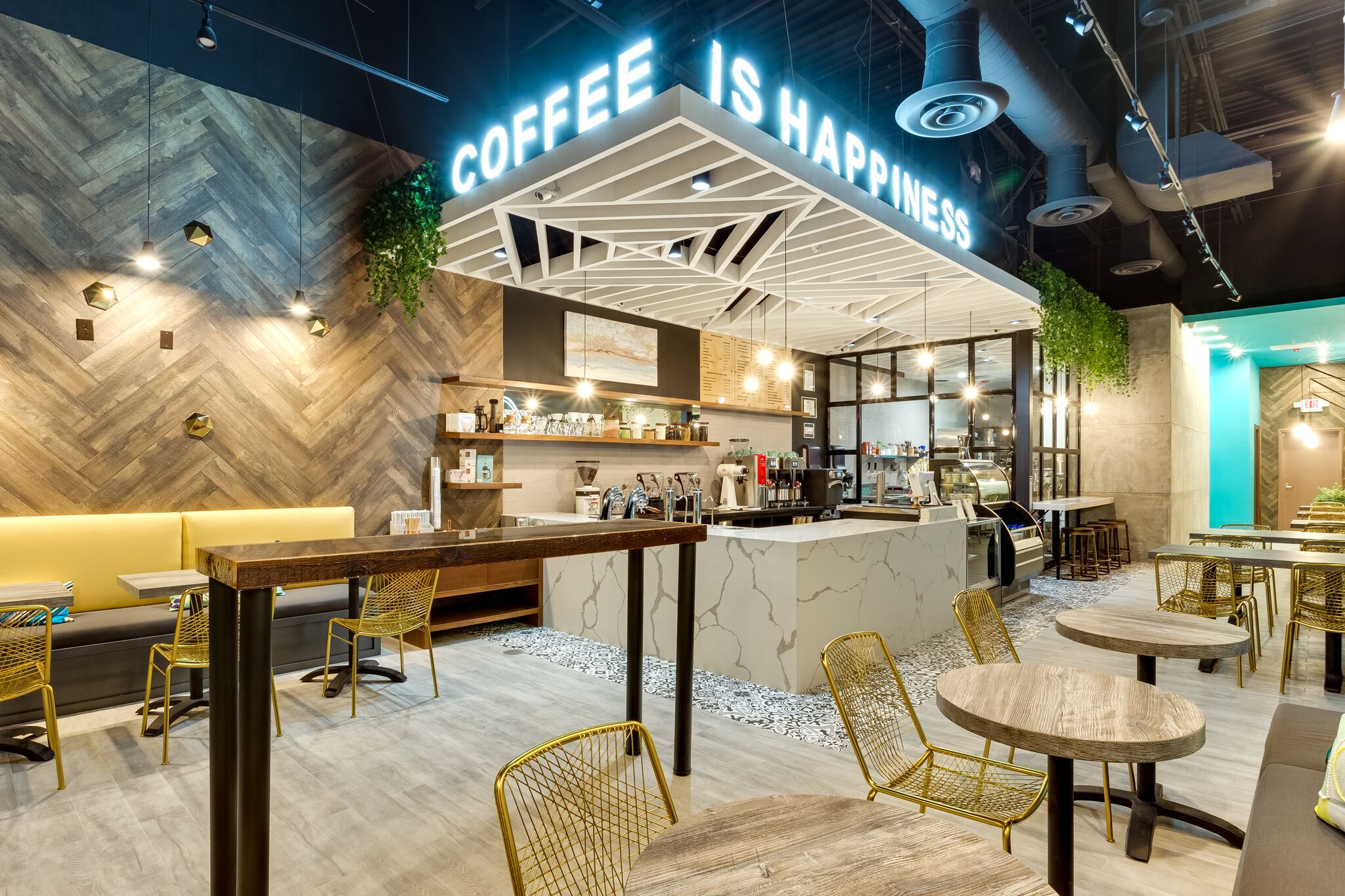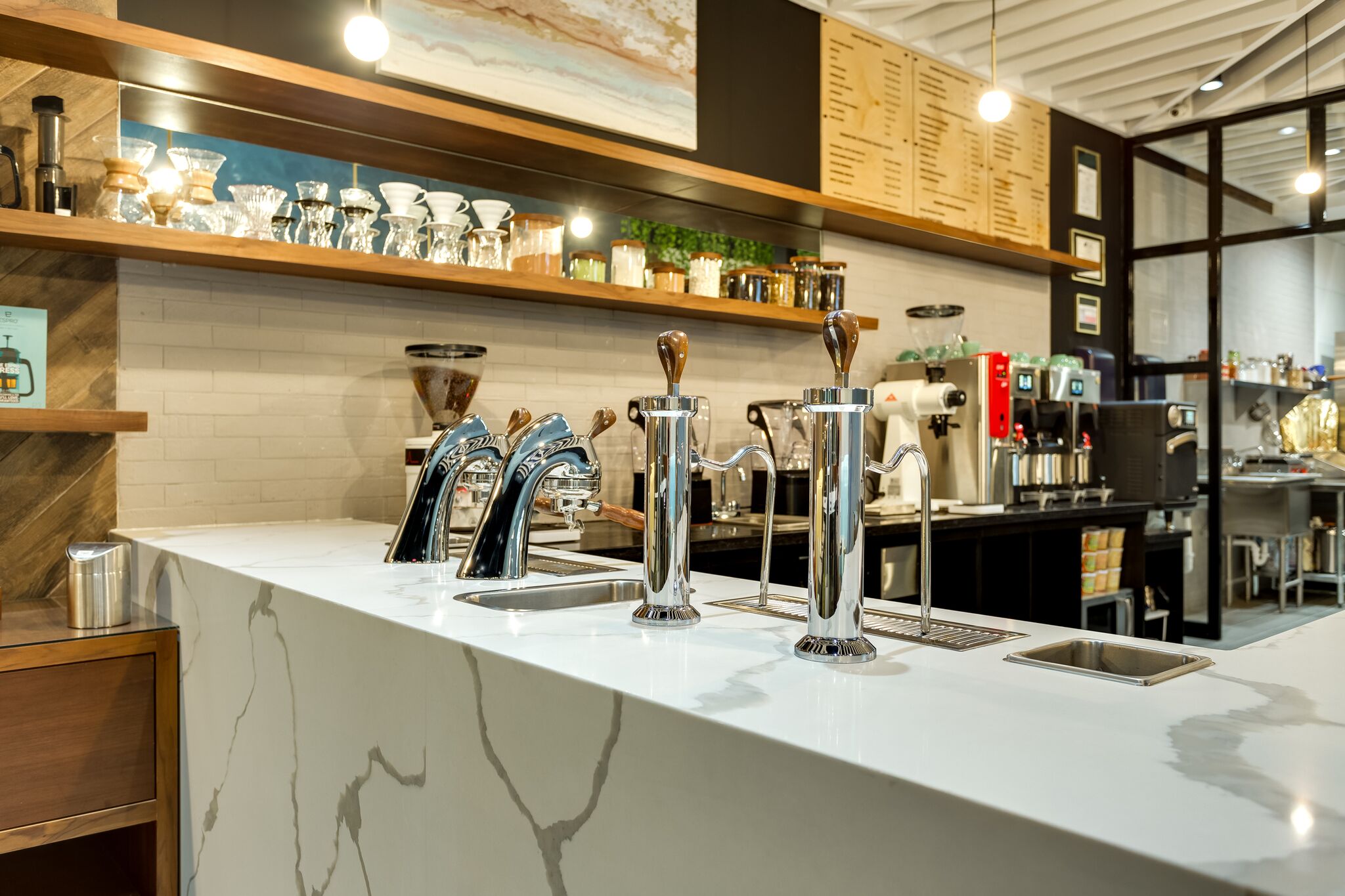
Photo by PhotographRGV.
As Michelle Quiroz and her husband Danny were planning their dream cafe in McAllen, Texas, they turned to their friends to brainstorm names.
“A friend of ours said, ‘You should call the company Quiroast,’” Michelle Quiroz told Daily Coffee News. “So that’s our nickname. They still affectionately call us that.”
In the end, the Quirozes went with a less self-referential monicker, Reserva Coffee Roasters, applying it to their recently opened cafe near Texas’s southernmost tip, less than 10 miles from the United States border with Mexico.
“We really want to focus on getting this concept right for the area,” Quiroz said. “It’s been interesting to see the response. We’re attracting a younger crowd… I would say we’re spending over half of our time interacting with guests, trying to match up a drink with them. We don’t have the typical flavors they’re accustomed to. We spend time trying to inform our guests of the offerings we do have.”
The Quirozes have had a passion for coffee for about 10 years, but it’s just in the last two and a half that they’ve put serious effort into learning to roast coffee while building a business around it. Michelle Quiroz is a former engineer who studied “how to repair things,” from aircraft engines to cell phone towers.

Photo by PhotographRGV
“We bought the production roaster before we even knew how to roast,” Quiroz said. “We purchased several training courses online through Boot Camp Coffee from Willem Boot, learning about roasting theory, coffee theory. It was really trial and error for us. Our emphasis was, ‘hey, let’s learn the science and the craft first before we open up a coffee shop.’”
Quiroz’s travels in her previous career informed several elements of Reserva, from the design to the espresso blend. Their Modbar espresso machine makes baristas visible to guests beneath Instagram-ready block letters that read, “COFFEE IS HAPPINESS.” Greenery cascades from the suspended ceiling, accented by soft light, cement walls and wood textures.
In the glass-enclosed kitchen, baker Enrique Martinez makes cookies and pretzel buns from scratch. Twists on Mexican sweetbreads like conchas are popular offerings alongside breakfast sandwiches, Belgian waffles and smoked salmon avocado toast.
Echoing the design influence, a trip to Europe and a candy bar gave Quiroz inspiration for Reserva’s Vintage espresso blend of Guatemala Antigua Santo Domingo and a Colombian coffee from Popayán, Cauca.
“I got my hands on some orange Kit Kats,” Quiroz said. “I thought that was such an interesting combination … we wanted something chocolatey with cocoa notes, but with a citrus background as well. That’s how we invented our Vintage blend.”
Reserva started out with wholesale accounts at doctor’s offices and restaurants, developing the brand through appearances at trade shows like the Texas Hunters and Sportsman’s Expo and the RGV Home & Garden show. Reserva currently has about 10 wholesale clients.
When it comes to buying greens, there’s no set coffee budget. The Reserva team aims to “select coffees that have the best representation of that country, but we haven’t put a price on what that means yet,” Quiroz said.

photo by PhotographRGV
The shop includes a small sample roaster, while a California-made Primo Roaster handles the production load about 15 miles away.
“Our rule is we can’t sample more than eight coffees at a time, it’s too overwhelming,” Quiroz said. “We roast to profile, depending on the origin. For Colombians we prefer the lighter end of roast spectrum and espresso we roast from the darker end, because that’s what our guests are accustomed to.”
Reserva serves pourovers and a standard list of espresso-based options, as well as a few specialty drinks. The Almendra Mocha is made with toasted almonds and dark chocolate. The Azucar Morena is a blend of brown sugar, ginger powder and cayenne pepper mixed with espresso and a little bit of milk.
“We have a running club in the area and they love that drink,” Quiroz said of the latter beverage, which translates to “brown sugar.” “It warms them up with the heat and spice as they’re going to run.”
The next generation of “Quiroasters” is already getting into the act. Danny and Michelle’s two daughters, ages 6 and 8, are fascinated by the roasting process. In January, the third-grader competed in a school science fair and took as her topic which of her parents’ current coffees had the most caffeine.
“We made a little pourover setup for her and she was brewing her coffee, using the TDS meter,” Michelle Quiroz said. “Her experiment won third place. We thought Ethiopia would have the most caffeine, but her results showed the Guatemala dark roast had more caffeine. I guess that’s why people love it?”
Lindsay Christians
Lindsay Christians (@LindsayC608) is a full-time food and arts journalist for The Capital Times in Madison, Wisconsin. She is the host of a weekly food podcast called The Corner Table.






Comment